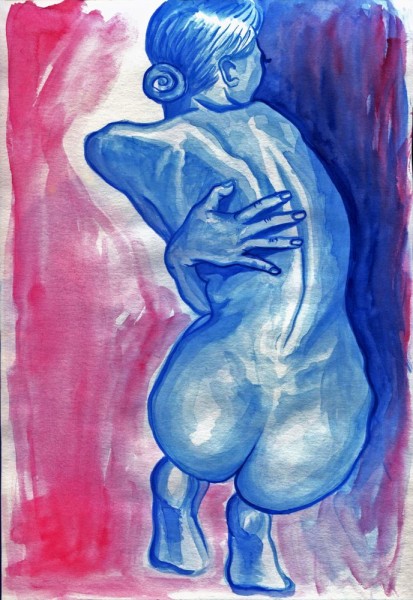Before you can float you must believe you can float. Many thoughts will try to cut in front of this belief. Don’t let them. You may have gotten big, substantial, but look at the massive container ships, whole cities on their sides, gliding in on the Hudson. Don’t listen to your body either; it may have come from the sea, but it has since been carved for the ground and has forgotten how to trust water.
If you’re like me and particularly susceptible to metaphors, be sure to bring your own to the pool, or one will be provided for you that you might not be ready for. If you like, you can borrow these:
Keep Still: The harder case because you must do nothing. Relax. Stretch out along the pool’s surface and bring yourself parallel to it. Chin up, chest up, belly up. Make yourself into an “X.” Your feet will want to drift down, so let them. Take your time breathing. If it helps, believe as the ancients believed (as we can’t help but believe) that bodies are only vessels for our true selves. Let your self run out and leave your body lighter and bobbing. Think to yourself that you are, at bottom, a thing that thinks, your body just a lovely illusion. None of this has to be true, of course. And if you float face down, don’t forget to not breathe. You will be able to do this for, like, twenty seconds max at first.
Have you heard the joke “How do you make a dead baby float?” My friends and I passed it around when we were about your age and trying on telling each other dangerous things.
“You take your foot off its head.”
Keep Moving: Much easier to stay up this way. Think about your shape, long and smooth and constant. The pool is a mountain on its side; look for good holds. See the water in front of you as a rope you reach for and pull yourself up with. Reach farther than you think you can.
I never told you about the mother who loaded her four children into her van on a Tuesday and drove into the Hudson. The oldest boy, same age as your brother, swam out through the window to the air while his mother and three siblings became the river.
Good. Right. As your teacher says, make a pizza, then cut it in half (breaststroke) or leave your elbows on the deck to remind yourself to keep your arms straight (freestyle). Kick constantly. On your back, picture a taut thread running from your chest to the ceiling, and you can’t help but ride the water’s surface.
I love to watch you chase your best shape through the lane length. You’ve gotten so strong.
I imagine that mother snapping her eleven-month-old into her special seat, pulling tight the straps across her chest, checking the seat belts for the older kids. She worried about keeping them safe on the drive to the water’s edge, and, safe, they were kept from floating. I think about how the oldest boy found something inside himself, something his mother had lost. As the water pushed him up, did he want to be back in his seat, even for a moment? Did he want to go down with them before they all went up? Or did such thoughts wash over him only after he walked wet to a nearby house and found someone to take him in?
Always, always kick. Yes, like that. See how easy it is to float?
If I lost you, if you were taken down, I would sink inside myself so deep that I could not be found. I would lose all faith in surfaces. I would forget how to come up.



 The core workshop of SmokeLong Fitness is all in writing, so you can take part from anywhere at anytime. We are excited about creating a supportive, consistent and structured environment for flash writers to work on their craft in a community. We are thrilled and proud to say that our workshop participants have won, placed, or been listed in every major flash competition. Community works.
The core workshop of SmokeLong Fitness is all in writing, so you can take part from anywhere at anytime. We are excited about creating a supportive, consistent and structured environment for flash writers to work on their craft in a community. We are thrilled and proud to say that our workshop participants have won, placed, or been listed in every major flash competition. Community works.